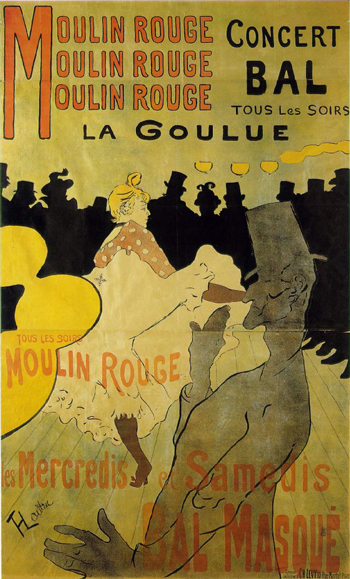| Search Art Prints | ||||||||||||||||||||
| Search Artists | ||||||||||||||||||||

|
||||||||||||||||||||
|
|
|||||||||||||||||||

Moulin Rougealso known as La Goulue

|
Though he had been respected in some circles before he painted Moulin Rouge, this piece cemented Toulouse-Lautrec's reputation both professionally and artistically. It garnered considerable positive attention from critics and the press, and he was never at a loss for commissions after this.
Overall, the piece is typical of a Toulouse-Lautrec poster. There generally a lack of detail and a flatness to the entire work; colors are muted and understated, even the beautiful gray and ochre of the dancer's petticoats. This enhanced reduction of pictorial components was the single most important marker of his transition from painting to poster-making.
Despite being in neither the foreground nor the background, the dancer is clearly the focus of the piece. The dancer in question is La Goulue, one of the most famous cabaret dancers in Paris at the time, and her pose is quite deliberate. La Goulue was widely known for her energetic, even chaotic dancing style--it was basically a hide-and-seek show of her flesh amid layers of swirling cloth, lace underskirts, and dark stockings. Toulouse-Lautrec paints her in a way as to capture both the intensity of her movement and her act's main selling point.
The row of dark figures forming the background against which La Goulue dances have two sources of inspiration: that of the silhouetted figures common to Japanese woodblock prints, and the shadow plays popular at the Chat Noir cabaret. The large, almost life-sized figure in the foreground serves a complimentary function to the background row. Essentially, La Goulue's action is framed between two dark planes of relative inactivity, drawing further attention to her action and emphasizing the scant, simple detail in which she is painted.











